Over 470 fireball reports from The Netherlands, France, Belgium, the UK and Germany
The IMO has received over 470 reports so far about of a fireball event seen above Amsterdam on September 21th, 2017 around 09:00pm CST (19:00 Universal Time). The fireball was seen primarily from Amsterdam but was also seen from France, Belgium, Germany and even the UK.
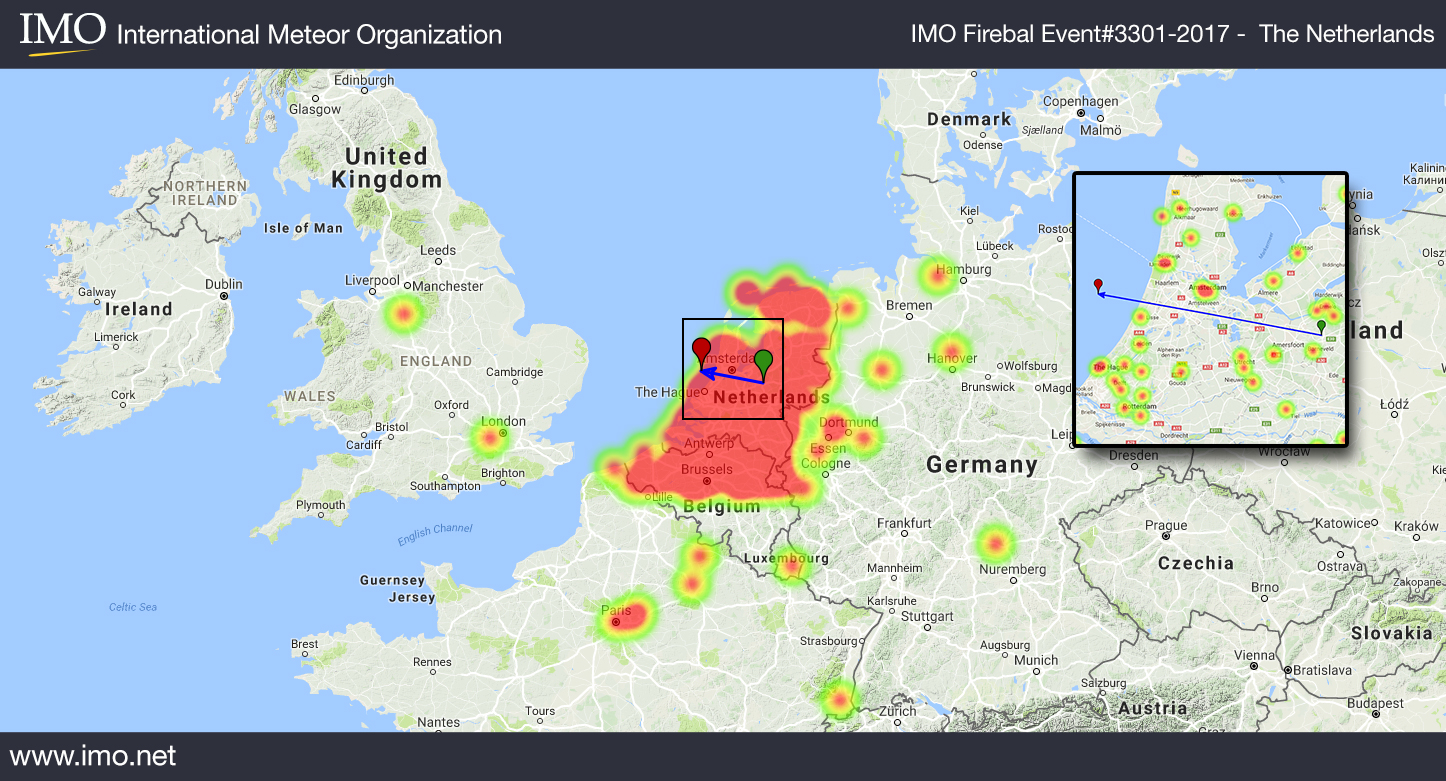
The fireball flew above The Netherlands with a rough West-North-West trajectory (~280° azimuth), starting 15 km South of Barneveld (Gelderland), and ending its luminous path 15 km offshore, 50 km above the North Sea. It lasted more than 5 seconds, flaring several times before disappearing (see video below). Seen the trajectory, and according to Martin Breukers (CAMS BeNeLux) calculations, the entry speed of the meteoroid was 29 km/s and it came from a radiant located at RA = 10°, Dec. = +10°, which fits with the (215) NPI (Northern delta-Piscids) radiant.
Submit an Official Fireball Report
The fireball has been caught on video by the FRIPON Network from at least 5 different stations (Lille, France, Noordwijk, NL, Brussels, BE).

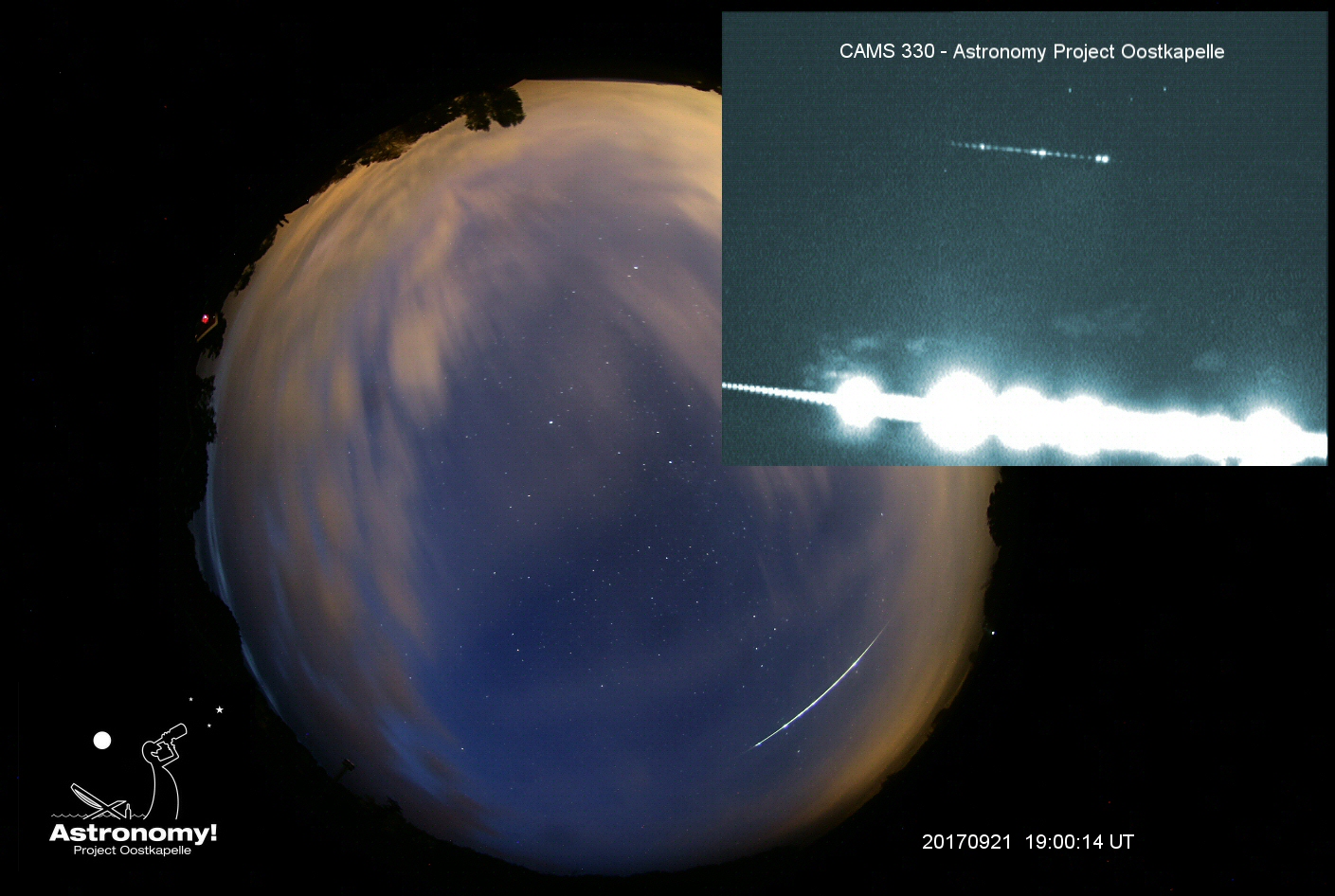
UPDATE (27/09/2017)
Further analysis by Marco Langbroek, using 6 photographic records of the Dutch-Belgian all-sky meteor camera network, confirmed the previous analysis made: the magnitude of the fireball ranged up to -10 (the brightness of a Moon Quarter), and lasted a bit more than 5.3 seconds. The meteoroid entered the atmosphere from a radiant which was low above the horizon (h = 16°) at a 31 km/s speed, and finished its light path 53 km above the sea level, at a 23 km/s, after travelling more than 150 km with a nearly East-West trajectory. It started over Deventer, passed southern Amsterdam/Schiphol airport, and finished its light path offshore. The low altitude of the radiant explains the very long path of the meteor, which was not far from being an earthgrazer. The radiant of the meteor indicates it was part of early Northern Taurids activity, sometimes called Northern delta-Piscids, and the meteoroid was thus a 2P/Encke nucleus fragment!
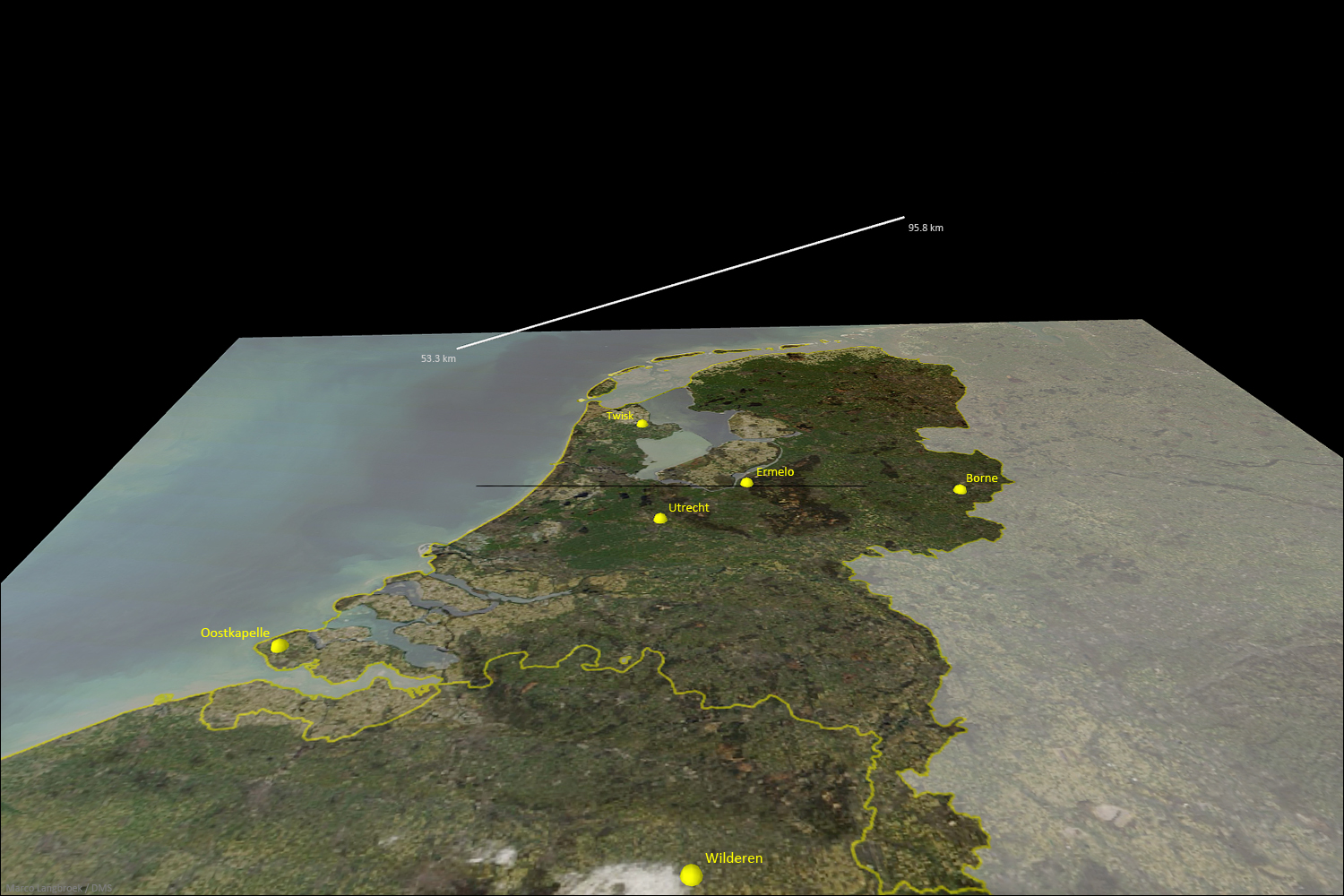
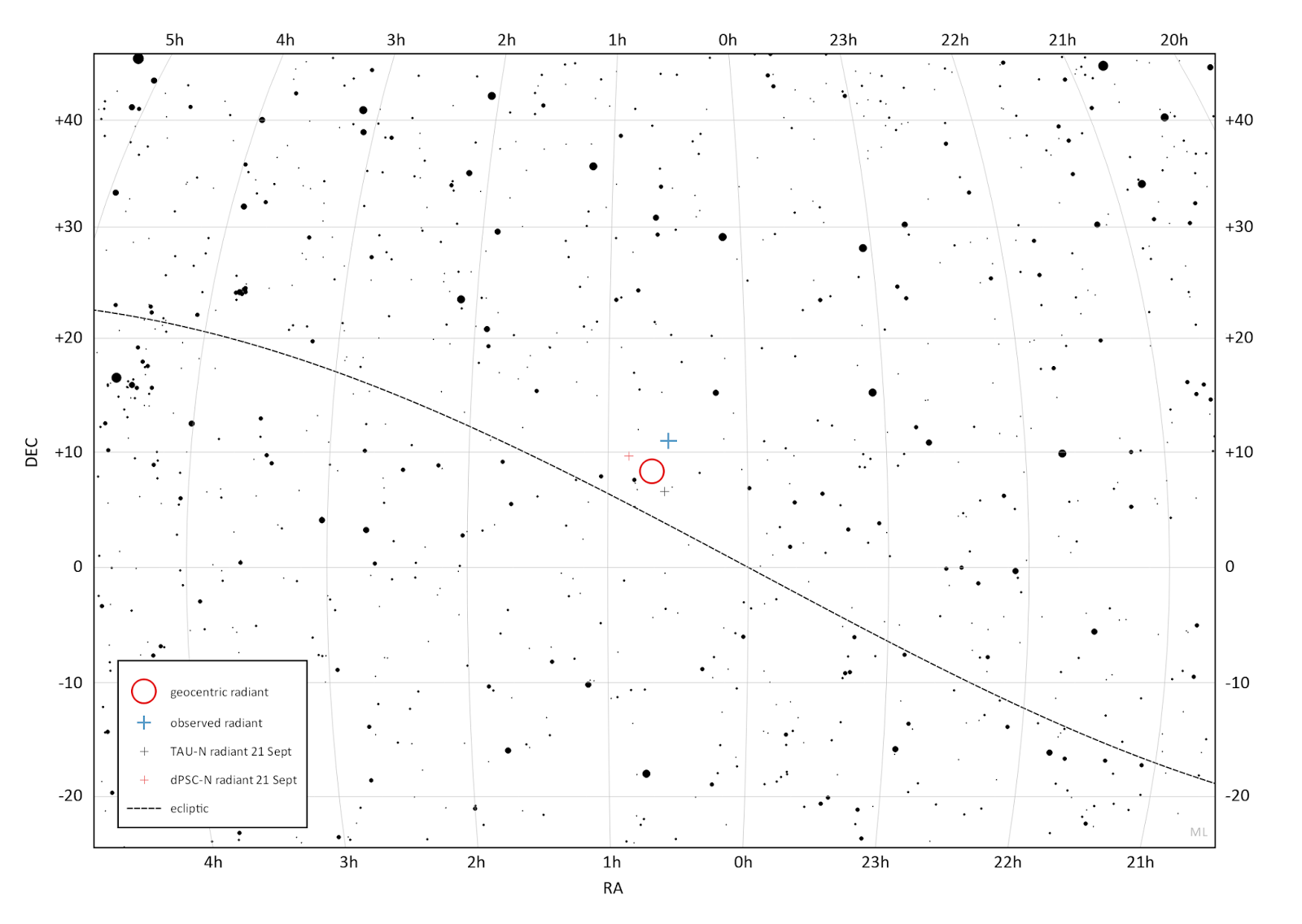
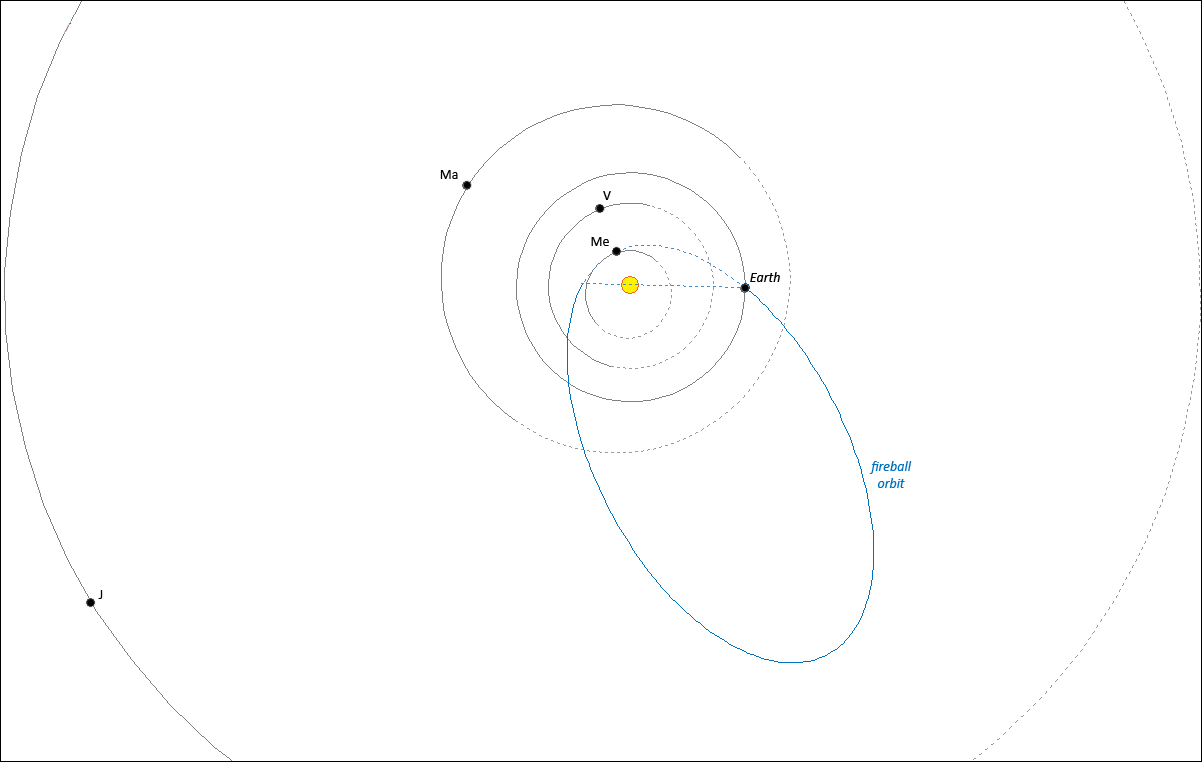
Press release (22/09/2017)
“On September 21st, 19h 00m UT (equaling 21h 00m, local time, in the Netherlands, France, Belgium, Luxembourg, Germany, and 20h 00min local time in the UK), a fireball was widely observed, reported and filmed. More than 380 reports regarding this event were sent by visual observers to the IMO (International Meteor Organization). They were reported from several countries: the Netherlands, Belgium, Germany, France, Luxembourg and the United Kingdom. It was observed from a very wide Western European area extending from Southern Alsace (Fr) to Manchester (UK), and from Paris (Fr) to Berlin (Ger).
The fireball was also captured from at least 5 video stations (Noordwijk, Brussels, Lille, Arras and Maubeuges) of the French Video Meteor Network FRIPON (Fireball Recovery and InterPlanetary Observation Network) and CAMs-BeNeLux video network.
All visual reports and a map showing the witness positions are available at the address: http://fireball.imo.net/members/imo_view/event/2017/3301
Automatic calculations issued from all the visual reports indicate the fireball occurred above the Netherlands. It started North of Barneveld (Gelderland) and travelled in an West-North-West direction (~280° in azimuth). It thus flew above Utrecht county, 10 km South of Amsterdam, above Hoofddorp, to end its luminous path above the North Sea, at a 15 km distance from the coast.
Fireballs are very bright phenomena that occur when a meteoroid (comet or asteroid fragment) enters the Earth’s atmosphere at a very high speed (several dozens of km/s). They are brighter than usual “shooting stars”, or meteors. If regular meteors are associated to millimeter or centimeter-sized meteoroids, fireballs are caused by bigger fragments (several centimeters or decimeters for the brightest ones), which make them brighter. Most witnesses think the event happened close to them, due to its apparent brightness and speed. This illusion is even more important when the meteor is observed close to the horizon. But in reality, the distance between a meteor and the observer is ranging from 70 to 500 km. Most meteoroids fully sublimate when they enter the atmosphere. For the larger meteoroids, fragments can survive the flight and be recovered on the ground: these are meteorites. In the case of the September 21st fireball, the fact that the meteor ends its trajectory above the North Sea makes impossible any meteorite recovery. But in some cases, it is very important to collect as much data and information possible (videos, pictures, visual reports) to try to determine as accurately as possible the path of the meteor. Thanks to such data and analysis, it can be possible to find the meteorite associated to a given event. This is what occurred in the Netherlands at the beginning of the year, with the Broek in Waterland meteorite recovery, after a fireball was observed: https://www.imo.net/sixth-authenticated-meteorite-fall-over-the-netherlands/
The IMO and all associated meteor organizations receive thousands of reports per year. This was made possible thanks to a dedicated Online Fireball Report Form that was created to collect scientifically usable information, even from laymen in astronomy who were lucky enough to observe a fireball. This Form is available in more than 28 languages at the address: http://fireballs.imo.net/
The IMO website contains a lot of information regarding meteors and similar events, as well as recommendations to observe them: http://www.imo.net.”




 You saw something bright and fast? Like a huge shooting star? Report it: it may be a fireball.
You saw something bright and fast? Like a huge shooting star? Report it: it may be a fireball.  You counted meteors last night? Share your results with us!
You counted meteors last night? Share your results with us!  You took a photo of a meteor or fireball? You have a screenshot of your cam? Share it with us!
You took a photo of a meteor or fireball? You have a screenshot of your cam? Share it with us!  You caught a meteor or fireball on video? Share your video with us!
You caught a meteor or fireball on video? Share your video with us!
4 comments
And I have seen it from Brussels. Was enormous and very beautiful. Reported it also to AMS. 🙂
Seen it by mistake from Brussels. It was nice.
this was such a great happening seen here in absolulely darkness standing near by a farm with cows… i thought something exploded over my head… a more green colour the fireball had in absolutly cloudless sky told me … this is caused by a gas (maybe i told …)
Location: 51.032300, 6.154280
19:00 or 21:00